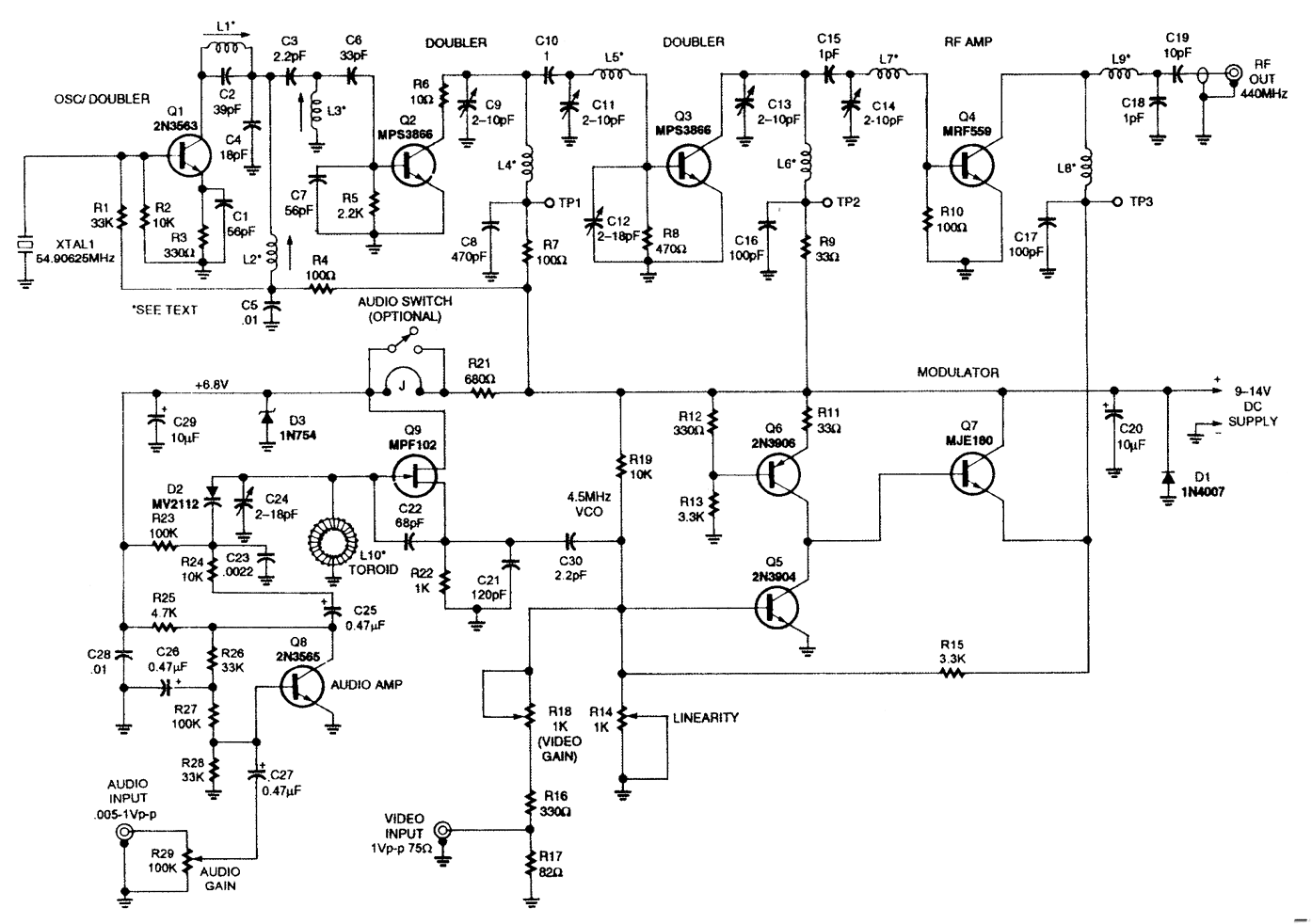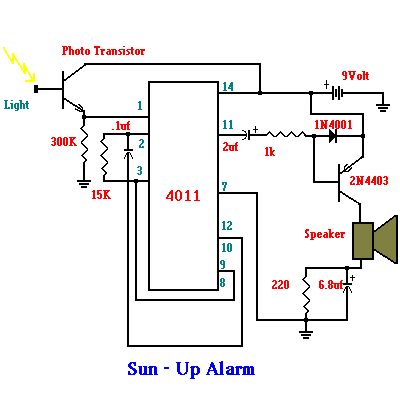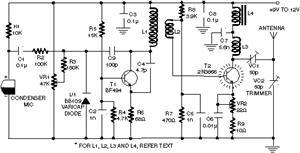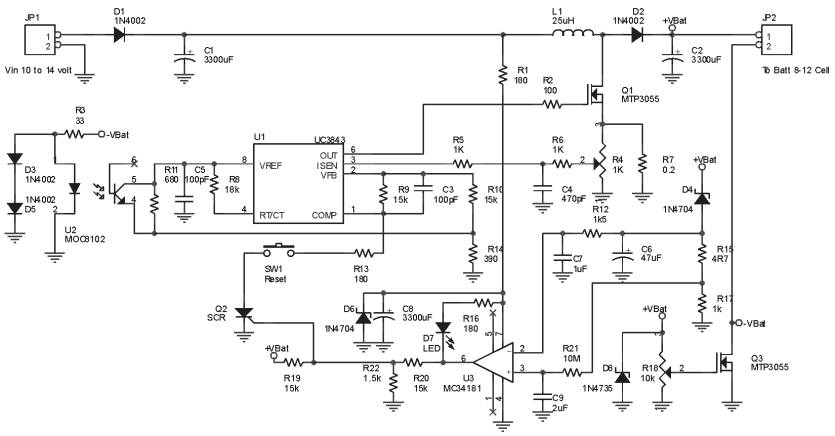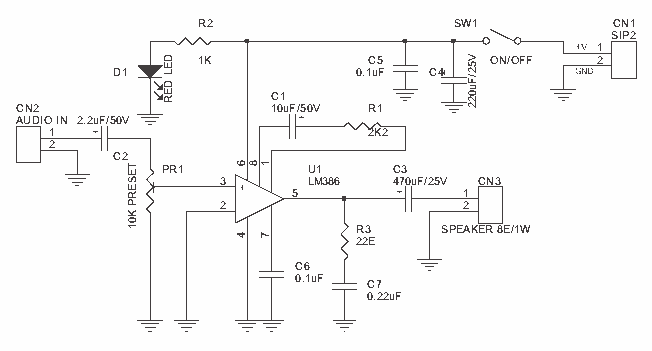
1W PLL FM transmitter schematic
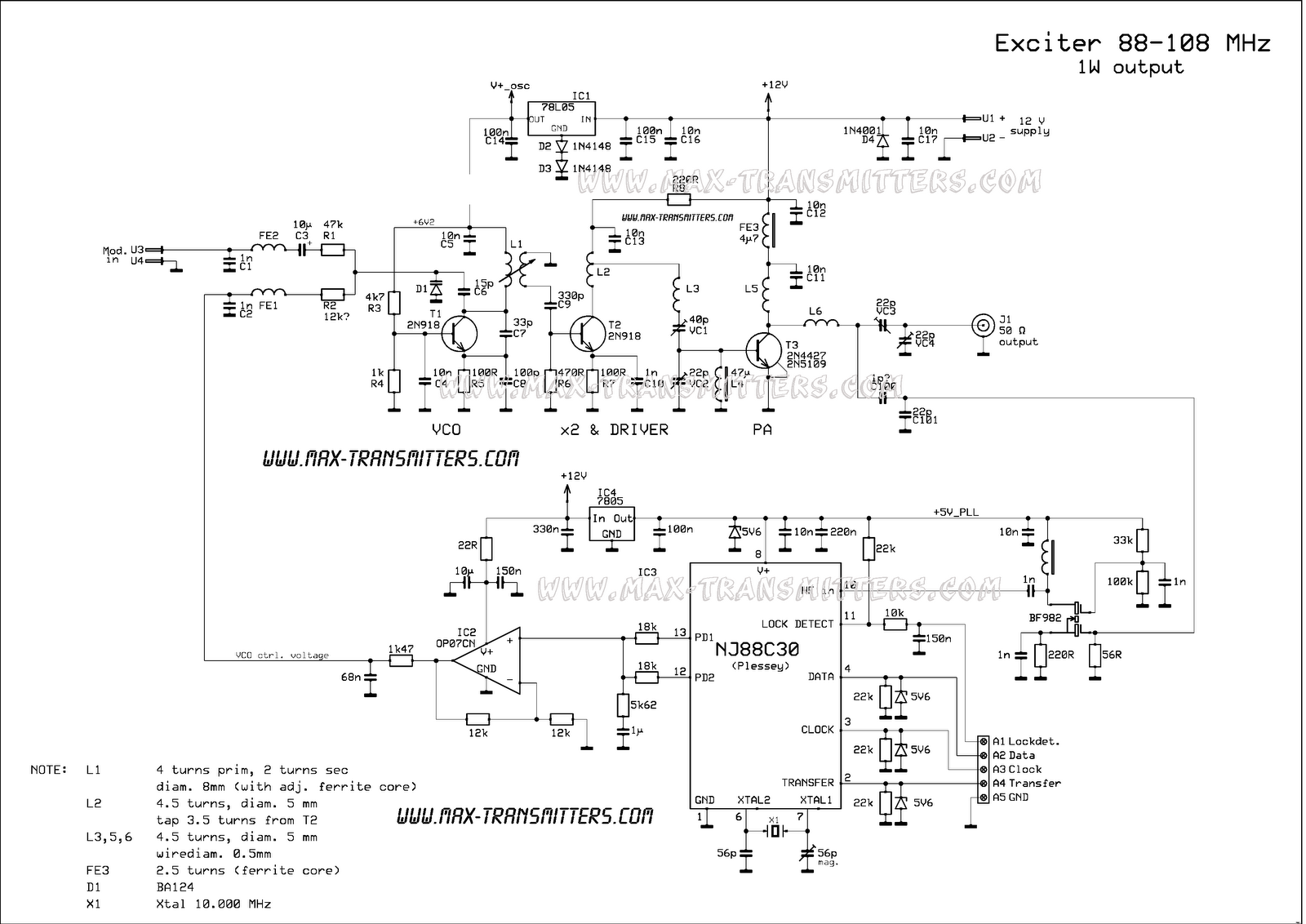
A compact FM transmitter designed for educational purposes. The RF section of this transmitter can be easily integrated into various projects. However, utilizing the PLL feature requires knowledge of constructing a serial data link and connecting the LPFM transmitter to a PC or microcontroller. Detailed information regarding the PLL can be found on Plessey's website.
The FM transmitter circuit typically consists of several key components including an oscillator, modulator, and power amplifier. The oscillator generates a carrier frequency, which is modulated by the audio signal input. The modulation process involves varying the frequency of the carrier wave in accordance with the amplitude of the audio signal, allowing the audio information to be transmitted over radio frequencies.
In this specific design, the RF section is likely based on a low-power FM (LPFM) transmitter configuration. The use of a PLL (Phase-Locked Loop) is essential for stabilizing the frequency of the transmitter, ensuring that it operates within the designated frequency band. The PLL can lock onto a reference frequency and maintain a constant output frequency, which is crucial for reducing interference and improving signal quality.
To connect the LPFM transmitter to a PC or microcontroller, a serial data link must be established. This can involve using UART (Universal Asynchronous Receiver-Transmitter) or SPI (Serial Peripheral Interface) protocols, depending on the specific requirements of the project. The data link allows for the transmission of control signals to the PLL, enabling fine-tuning of the transmitter's frequency and other parameters.
For those interested in further exploring the capabilities of this FM transmitter, the manufacturer's website provides comprehensive documentation regarding the PLL and its implementation. This resource can assist in understanding the technical specifications and operational guidelines necessary for effectively utilizing the transmitter in various applications.Cool little FM transmitter. Suitable for study purposes, you can use the RF part of this transmitter easily for your projects. However, unless you know how to build a serial data link and connect this LPFM transmitter to a PC or a microcontroller, you won`t be able to use the PLL. All info about the PLL is available at Plessey`s web page. 🔗 External reference
The FM transmitter circuit typically consists of several key components including an oscillator, modulator, and power amplifier. The oscillator generates a carrier frequency, which is modulated by the audio signal input. The modulation process involves varying the frequency of the carrier wave in accordance with the amplitude of the audio signal, allowing the audio information to be transmitted over radio frequencies.
In this specific design, the RF section is likely based on a low-power FM (LPFM) transmitter configuration. The use of a PLL (Phase-Locked Loop) is essential for stabilizing the frequency of the transmitter, ensuring that it operates within the designated frequency band. The PLL can lock onto a reference frequency and maintain a constant output frequency, which is crucial for reducing interference and improving signal quality.
To connect the LPFM transmitter to a PC or microcontroller, a serial data link must be established. This can involve using UART (Universal Asynchronous Receiver-Transmitter) or SPI (Serial Peripheral Interface) protocols, depending on the specific requirements of the project. The data link allows for the transmission of control signals to the PLL, enabling fine-tuning of the transmitter's frequency and other parameters.
For those interested in further exploring the capabilities of this FM transmitter, the manufacturer's website provides comprehensive documentation regarding the PLL and its implementation. This resource can assist in understanding the technical specifications and operational guidelines necessary for effectively utilizing the transmitter in various applications.Cool little FM transmitter. Suitable for study purposes, you can use the RF part of this transmitter easily for your projects. However, unless you know how to build a serial data link and connect this LPFM transmitter to a PC or a microcontroller, you won`t be able to use the PLL. All info about the PLL is available at Plessey`s web page. 🔗 External reference
